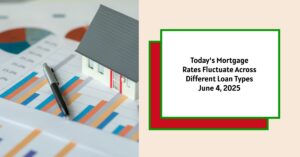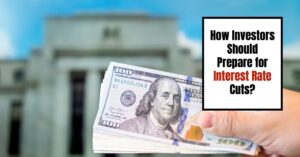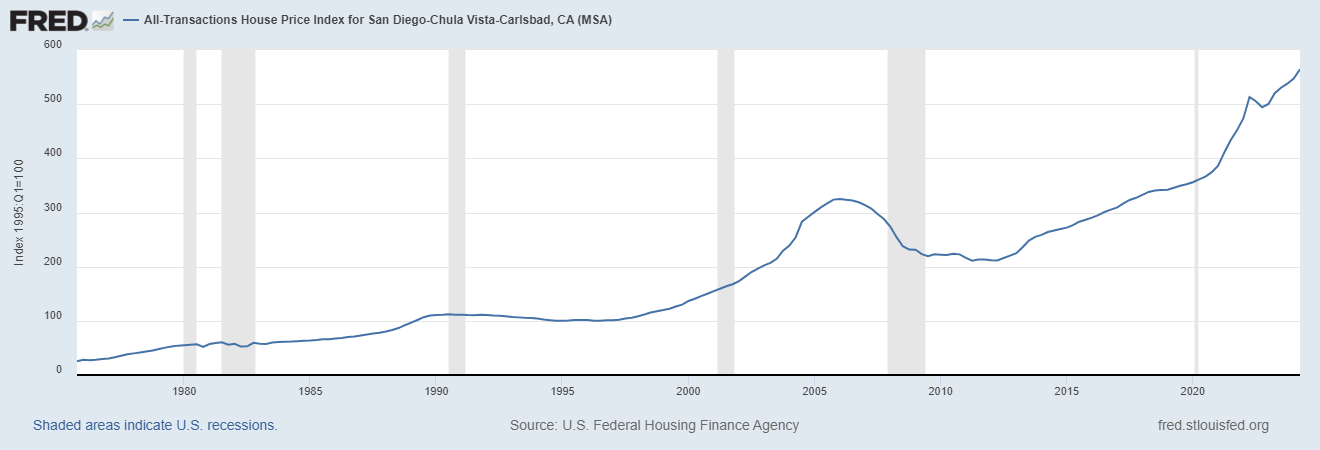Looking for the best mortgage rates? Today, June 4, 2025, the states offering the cheapest 30-year mortgage rates for new purchases are New York, Washington, California, Florida, Massachusetts, Colorado, Georgia, and Texas. These states boast average rates between 6.75% and 6.93%.
Buying a home is a huge decision, and understanding mortgage rates is critical. You're not just buying a house; you're making a long-term financial commitment. And let's be honest, wading through the world of interest rates, APRs, and loan terms can feel like navigating a maze. That's why I'm breaking down today's lowest mortgage rates by state to help you get a clearer picture.
States With Lowest Mortgage Rates Today – June 4, 2025
Why Do Mortgage Rates Vary by State?
It's a good question. You might think a national mortgage should have a pretty consistent rate, but that’s not how it works. Several factors contribute to this variation:
- Different Lenders, Different Regions: Not every lender operates in every state. Regional players can offer different rates based on their local market conditions.
- State-Level Regulations: Banking regulations can differ from state to state, impacting how lenders operate and the rates they offer.
- Credit Scores and Loan Sizes: Each state has its own average credit score and average loan size. States with higher average credit scores generally have lenders that can offer lower rates.
- Risk Management: Lenders have diverse strategies for managing risk. This can affect the rates they offer in certain states.
I've seen firsthand how these factors play out. For example, in states with booming economies and high property values, lenders might be more willing to offer competitive rates because they perceive less risk. Conversely, in states with slower growth or higher foreclosure rates, lenders might charge a premium.
Here's a quick look at the states where you can find the best deals on mortgage rates today:
- New York
- Washington
- California
- Florida
- Massachusetts
- Colorado
- Georgia
- Texas
States With the Highest Mortgage Rates Today
Now, let's flip the coin. While some states offer attractive rates, others are on the pricier side. Today, according to Investopedia, the states with the highest 30-year mortgage rates include:
- Alaska
- West Virginia
- Mississippi
- Kansas
- Rhode Island
- Maine
- South Dakota
- Vermont
In these states, the average rates range from 7.03% to 7.19%. This difference, while seemingly small, can add up to tens of thousands of dollars over the life of a 30-year mortgage.
National Mortgage Rate Overview
Okay, so we've looked at the best and worst states. But what's happening on a national level? According to Investopedia, rates on 30-year new purchase mortgages have decreased over the last few market days, bringing the national average down to 6.97%. That's the lowest it's been in almost a month.
But let's put that into context. Back in March 2025, we saw 30-year rates hit a low of 6.50%, and in September of last year, they even dipped to 5.89%, a two-year low. So, while today's rates are better than recent weeks, they're still higher than the best we've seen this year.
Here's a breakdown of national averages for different loan types:
| Loan Type | New Purchase Rate |
|---|---|
| 30-Year Fixed | 6.97% |
| FHA 30-Year Fixed | 7.37% |
| 15-Year Fixed | 5.96% |
| Jumbo 30-Year Fixed | 6.95% |
| 5/6 ARM | 7.13% |
Source: Zillow
Don't Fall for the Teaser Rates!
You've seen those ads, right? “Mortgage rates as low as X%!” It's tempting, but often misleading. These teaser rates are typically “cherry-picked” and might require you to pay points upfront or have an impossibly high credit score. In reality, the rate you'll actually qualify for will depend on your individual circumstances.
Remember, your credit score, income, debt-to-income ratio, and the size of your down payment all play a role.
I always advise people to be skeptical of rates that seem too good to be true. Do your homework, compare offers from multiple lenders, and don't be afraid to ask questions.
How to Calculate Your Mortgage Payment
Estimating your monthly mortgage payment is crucial for budgeting. It's not just the principal and interest that you need to consider. Property taxes and homeowner's insurance also play a significant role, as well as potential HOA fees.
Here's a breakdown of the components:
- Principal and Interest: This is the base amount you borrow and the interest you pay on it.
- Property Taxes: These are taxes levied by your local government based on the assessed value of your property.
- Homeowners Insurance: Protects your home against damage from fire, storms, and other covered events.
- PMI (Private Mortgage Insurance): If your down payment is less than 20%, you'll likely have to pay PMI.
Let's illustrate with an example based on the rate environment on June 4, 2025:
Let's say you're buying a home for $440,000 with a 20% down payment (which is $88,000) and getting a 30-year mortgage at 6.67% APR.
Breaking it down:
- Mortgage Size: $352,000
- Principal & Interest: $2,264.38
- Property Taxes: $256.67
- Homeowners Insurance: $128.00
- Total Monthly Payment: $2,649.04
Over 30 years, the Mortgage Interest would be $463,176.16 Over 30 years, the Total Mortgage Paid would be $815,176.16
Keep in mind that this is just an estimate. Your actual payment may vary depending on your specific circumstances.
What Makes Mortgage Rates Rise and Fall
Understanding the dynamics behind mortgage rates can help you make more informed decisions about when to buy or refinance. Investopedia suggests several key factors influence mortgage rates:
- Bond Market: Mortgage rates often track the performance of the bond market, particularly the 10-year Treasury yield.
- Federal Reserve (The Fed): The Fed's monetary policy, including bond buying and its control of the federal funds rate, can impact mortgage rates.
- Competition: Competition among lenders and across different types of loans can also influence rates.
I've found that the Federal Reserve's actions often have the most significant impact. For example, massive bond-buying programs during the pandemic helped keep rates low. But when the Fed started tapering those purchases and raising the federal funds rate to combat inflation, mortgage rates surged.
Remember, while the fed funds rate doesn't directly dictate mortgage rates, it indirectly influences them through market sentiment and investor expectations.
Here's how it's played out recently:
- In September of the previous year, the central bank announced a first rate cut of 0.50 percentage points, and then followed that with quarter-point reductions in November and December.
- For its third meeting of the new year, however, the Fed opted to hold rates steady—and it’s possible the central bank may not make another rate cut for months.2 With a total of eight rate-setting meetings scheduled per year, that means we could see multiple rate-hold announcements in 2025.
Read More:
States With the Lowest Mortgage Rates on June 3, 2025
When Will Mortgage Rates Go Down from Current Highs in 2025?
My Final Thoughts
Navigating the mortgage rate environment can be challenging, but with the right information, you can make smart choices. Don't just settle for the first rate you see. Shop around, compare offers, and understand the factors that influence your rate. Remember, a lower rate can save you a significant amount of money over the long term.
Pay attention to macroeconomic factors. Keeping tabs on the Fed's moves, inflation reports, and overall economic trends can help you anticipate how mortgage rates might change in the future.
And don't be afraid to seek professional advice from a mortgage broker or financial advisor. They can provide personalized guidance based on your unique circumstances..
Invest in Real Estate in the Top U.S. Markets
Investing in turnkey real estate can help you secure consistent returns with fluctuating mortgage rates.
Expand your portfolio confidently, even in a shifting interest rate environment.
Speak with our expert investment counselors (No Obligation):
(800) 611-3060
Also Read:
- Will Mortgage Rates Go Down in 2025: Morgan Stanley's Forecast
- Expect High Mortgage Rates Until 2026: Fannie Mae's 2-Year Forecast
- Mortgage Rate Predictions 2025 from 4 Leading Housing Experts
- Mortgage Rates Forecast for the Next 3 Years: 2025 to 2027
- 30-Year Mortgage Rate Forecast for the Next 5 Years
- 15-Year Mortgage Rate Forecast for the Next 5 Years
- Why Are Mortgage Rates Going Up in 2025: Will Rates Drop?
- Why Are Mortgage Rates So High and Predictions for 2025
- Will Mortgage Rates Ever Be 3% Again in the Future?
- Mortgage Rates Predictions for Next 2 Years
- Mortgage Rate Predictions for Next 5 Years
- Mortgage Rate Predictions: Why 2% and 3% Rates are Out of Reach
- How Lower Mortgage Rates Can Save You Thousands?
- How to Get a Low Mortgage Interest Rate?
- Will Mortgage Rates Ever Be 4% Again?












